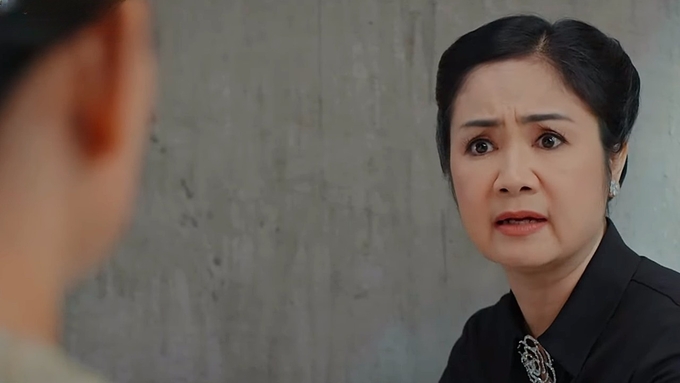Imagine a scene: a bustling marketplace, children playing, laughter filling the air. Suddenly, a scream pierces the joyous symphony. A man collapses, clutching his chest, eyes wide with terror. The crowd gathers, whispers turning to panicked gasps. This, unfortunately, is a scenario all too common: sudden cardiac arrest, a silent killer that claims countless lives each year.

Image: vtv.vn
But what if, in that moment of chaos and fear, someone stepped forward, armed with knowledge and skills, ready to fight for that man’s life? This is where CPR, Cardiopulmonary Resuscitation, comes in. This powerful tool, a lifeline in times of crisis, becomes a beacon of hope, offering a fighting chance when every second counts. We’ve delved into the fundamentals of CPR in previous episodes, and now, in Episode 10, we’re revisiting the topic to empower you with further knowledge and confidence.
A Deeper Dive: Demystifying the Mechanics of CPR
CPR is a combination of chest compressions and rescue breaths, aiming to keep blood circulating and oxygen flowing to the brain until professional help arrives. But how exactly does this work? Let’s break down the science behind this life-saving technique.
1. The Crucial Compressions: Think of your heart as a powerful pump. When your heart stops, this pump fails, leading to a cessation of blood flow. Chest compressions, performed rhythmically and forcefully, take over the heart’s role, artificially pushing blood through the body. Imagine compressing a sponge – with each compression, water is expelled, mimicking the action of the heart.
2. Rescue Breaths: Bringing Oxygen Back In: While compressions ensure continuous blood circulation, we need oxygen to keep our vital organs functioning. Rescue breaths are crucial to introducing oxygen into the lungs, mimicking the natural breathing process.
3. The Chain of Survival: A Relay Race for Life: CPR is just one link in the chain of survival, a collaborative effort to increase the chances of survival after cardiac arrest. This chain consists of several interconnected stages:
- Early Recognition: Recognizing the signs of cardiac arrest – sudden collapse, unresponsiveness, no signs of breathing – is the first and crucial step.
- Early CPR: Initiating CPR promptly can significantly increase the chance of survival. Remember, every second counts.
- Early Defibrillation: If available, an Automated External Defibrillator (AED) is a vital tool for delivering an electrical shock, restarting the heart’s rhythm.
- Early Advanced Medical Care: Paramedics, trained to handle complex medical situations, provide further care once they arrive.
The Power of Knowing: Building Confidence in CPR
The fear of the unknown can paralyze us in a crisis. Yet, having knowledge and confidence can empower you to act decisively and potentially save a life. Here’s what to remember:
- CPR is not as complicated as it sounds: Simple, rhythmic chest compressions and rescue breaths can make a world of difference.
- You don’t need to be a medical professional: Anyone can learn CPR – it’s a skill that can be acquired through simple training courses.
- The more people know CPR, the better: Imagine a world where everyone is equipped with this lifesaving knowledge. The impact would be immeasurable.
Beyond the Basics: Emerging Trends in Resuscitation
The world of resuscitation is constantly evolving, with advancements in technology and techniques offering hope for greater saving lives.
- Point-of-Care Ultrasound (POCUS): This non-invasive technology enables healthcare professionals to visualize the heart during CPR, providing valuable information about its function and guiding resuscitation efforts.
- Targeted Temperature Management (TTM): After a cardiac arrest, inducing hypothermia (lower body temperature) has been shown to improve neurological outcomes for patients.
- Robotics and AI: The Future of Resuscitation: Research is underway to develop robotic systems capable of performing CPR and delivering targeted therapies, aiding in efficient and precise resuscitation efforts.

Image: nongnghiep.vn
Expert Insights: Get Equipped with the Right Tools
Dr. Sarah Miller, a renowned cardiologist and expert in resuscitation, shares her insights: “CPR is not about perfection; it’s about doing something. Even if you’re unsure about the steps, starting any form of CPR is better than doing nothing. You’re literally giving someone a second chance at life.”
Mr. David Johnson, a CPR instructor for over 20 years, highlights the importance of regular training: “The more you practice, the more comfortable you’ll become. It’s about building muscle memory so that those movements become automatic in a crisis.”
Tram Cuu Ho Trai Tim Tap 10
Taking Action: Joining the Fight for Life
Knowing CPR doesn’t just equip you with a skill; it empowers you to be a lifeline in times of crisis. Consider these next steps:
- Enroll in a CPR training course: There are many readily available courses, both online and in person.
- Share your knowledge with others: Encourage friends, family, and community members to learn CPR.
- Become a CPR instructor and help train others: Spread the knowledge and empower others to save lives.
In conclusion, CPR is a powerful tool, a simple yet profound skill that can turn a moment of despair into a flicker of hope. By equipping ourselves with the knowledge and taking action, we can become a part of the bigger picture, contributing to a world where survival rates from sudden cardiac arrest are drastically improved. Let’s be the ones to stand up and fight for life, one heartbeat at a time.






